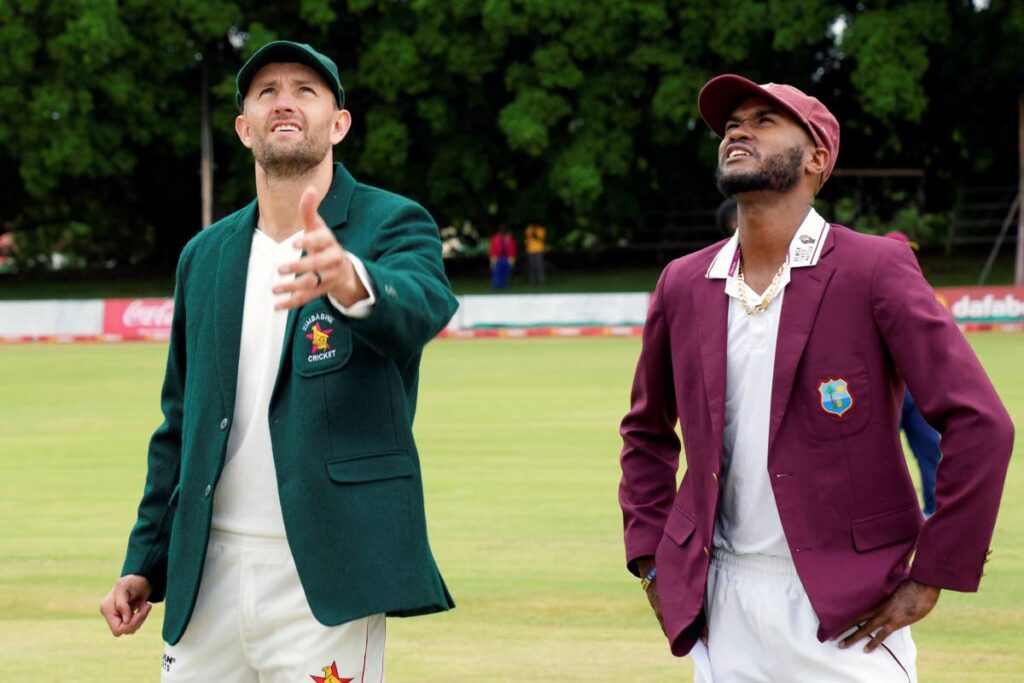On winning the toss...bat first

I assume a cricket captain always feels he has a good reason, upon winning the toss, to ask the opposing team to bat first. Oftentimes, it backfires and the skipper can end up with egg on his face.
Most of the time it is better to bat first and have the advantage of runs on the board, with one’s opponent at a disadvantage of chasing a reasonably large total. That is the theory and it’s sound.
In first-class cricket, it is hardly ever likely for pitch conditions to suit the side bowling first. As the former Australian skipper Greg Chappell once said, “on winning the toss, I always bat first, nine times out of ten,” then, with tongue firmly in cheek, he continues, “and the tenth time I would think about it carefully, then bat.”
Of course, I am dealing here with two-innings cricket, where the state of the pitch, plus atmospheric conditions, could play a huge part in the outcome of the game. In limited overs cricket, one-day stuff, pitch and atmospheric conditions don’t fluctuate, or very little anyway, thus, it really doesn’t matter.
Nonetheless, in first-class cricket which is played over three or four days and Test cricket which is five, the pitch has to be prepared to last for the length of the game. Once the toss is taken, the pitch preparation is over; and while the pitch can be rolled between innings, water cannot be used on it, nor grass added for the duration of the game. This means that the wicket (pitch) could become drier as the game continues. That suggests the surface can change, assisting the bowlers by playing at varying heights, less bounce, grip and turn some more.
Cricket, being the game it is, makes for an intriguing contest due to the variation in the condition of the wicket. Not every pitch would be the same because individual groundsmen have different styles. Hence, a variation of water, grass and rolling is expected. This tends to change the nature of the wicket. Hence, one cannot necessarily read how long the pitch would last and how it would play as the match progresses.
Thus, a captain, on winning the toss, would be in a better position to bat first in order to build a big total and dictate the game from there.
Having said that, he may think of his adversary as weak, therefore, send them in with the possibility of dismissing them for a low score, then pile up a large total and bowl them out cheaply again for the win. However, it’s an insecure position in which to place oneself. The skipper who lacks confidence in his batting usually opts to bowl first.
The other argument used for choosing to bowl is to use the preparation moisture on the pitch to the fast bowlers’ advantage.
This is risky. One of the main reasons is that opening batsmen have special techniques; they play circumspectly, have an ideal temperament, endless concentration, plus, the right psychological attributes to bat first without knowing how the wicket will perform. Additionally, they possess the patience to counteract the freshness of the pitch with a sound technique.
Captains have their own reasons for fielding first, nevertheless, in the years of my experience at the first-class level, there’s an advantage in the first-class game and at the Test level in batting first. The team that bats first, all things being equal, holds the cards and could dictate the course of the match.

Darren Bravo, the TT Red Force captain, won the toss last weekend in the opening fixture against the Windward Islands Volcanoes and he chose to bowl first, thereby putting himself at a disadvantage to win the match. Analysing the game, while taking early wickets, Red Force allowed a strong middle-order revival by the Volcanoes though Red Force were on top.
They played loose with the score as they had yet to bat. This could happen when allowing the opponent to bat first and one is not defending a total.
In their fight back to wrest the advantage, Amir Jangoo, Tion Webster and Terrance Hinds played some vital innings and gave Red Force a lead. The Volcanoes ran away in the second innings and had Bravo and his team struggling to survive in the second innings on a wearing pitch, chasing 354 for victory; they were 225 for seven at the close.
Also, in first-class cricket, allowing a spin bowler to share the new ball is a mistake. Bravo did it in both innings.


Comments
"On winning the toss…bat first"